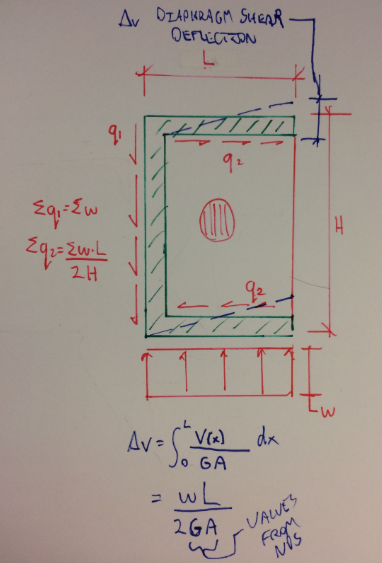Hi Friends and Experts,
We have an open front structure. Three side masonry shear walls and one side open with roof joists. Inorder for me to transfer the wind and seismic loads I have to make the roof deck rigid. Flexible diaphragm will not transfer the torsional loads. I cannot add any beams as cross bracing because of aesthetics.
I took the option of metal deck but after few calculations it came out to be flexible. at the most semi rigid.
Last option for me is to make the deck composite with concrete topping. Like floor deck.
Are there any other types of roof decks? that are rigid? or any suggestions? Or how can we make metal deck rigid?
We have an open front structure. Three side masonry shear walls and one side open with roof joists. Inorder for me to transfer the wind and seismic loads I have to make the roof deck rigid. Flexible diaphragm will not transfer the torsional loads. I cannot add any beams as cross bracing because of aesthetics.
I took the option of metal deck but after few calculations it came out to be flexible. at the most semi rigid.
Last option for me is to make the deck composite with concrete topping. Like floor deck.
Are there any other types of roof decks? that are rigid? or any suggestions? Or how can we make metal deck rigid?

